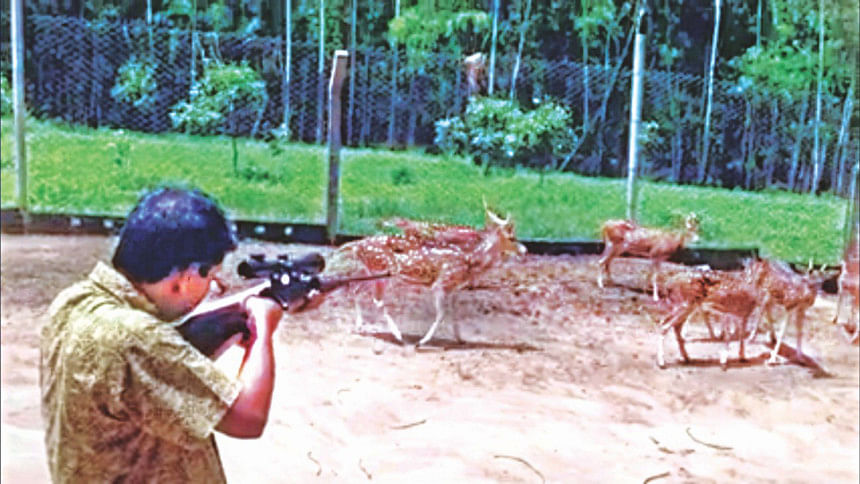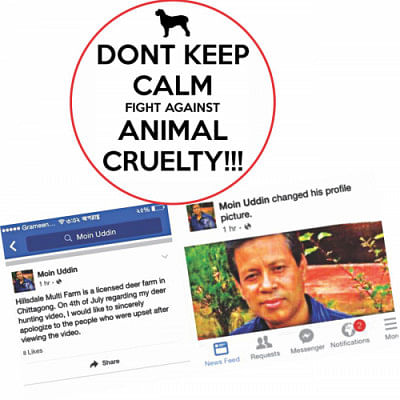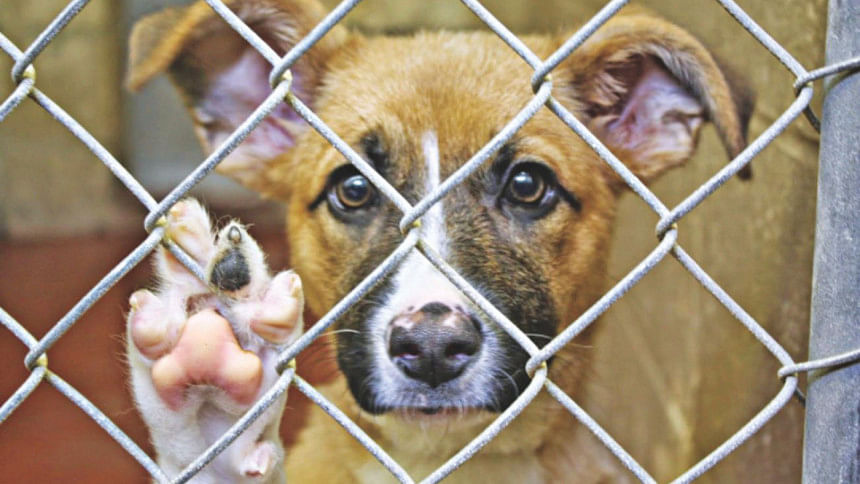Animal Cruelty Laws Resurrected

June 16, 2015:
Three youths were caught beating a dog in Rampura. The rescuers found the dog fighting for his life, and took him to a vet and later to the Obhoyaronno Clinic for treatment. The boys named him Whitey and took him under their care. Three days and three hours later, the first full-fledged criminal case of animal abuse was filed with Rampura police station. During interrogation, the abusers admitted to have had beaten up the stray dog with shovels.

July 4, 2015:
Moin Uddin, a Bangladeshi currently residing in Australia, killed a spotted deer at his allegedly unauthorised farm in Chittagong and afterwards released a video clip of the incident on Facebook – the act is clearly described as a criminal offence by the wildlife conservation authorities. The video shows Moin first shooting the deer and then slitting its throat with a knife as it struggled desperately under his grasp. After the outrage caused by the video and the threat of legal action, Moin took it down and apologised for upsetting viewers. But not for the killing.
|
If any person (a) overdrives, cruelty or unnecessarily beats, or otherwise ill-treats any animal, or |
According to the Cruelty to Animals Act 1920, that provides legal protection to animals in Bangladesh, Whitey's abusers and Moin Uddin are to be either fined or jailed. The piece of legislation although archaic is impressively extensive. One excerpt from the Act lists the offences punishable by fine or jail time:
Even with laws in existence, dog culling was a systematic government-endorsed practice until 2012 when a writ petition issued by the efforts of Rubaiya Ahmad (founder of Obhoyaronno) and others banned dog culling in Dhaka and eventually all over Bangladesh. Since then the combined efforts of animal activists have banned animal fighting and similar offences under a law that was up until now, invisible.
Currently Rubaiya and others are working to issue a petition to close down Katabon. There have been attempts in the past to weed out illegal trading, mostly of wildlife and endangered animals. But the trade of animals, particularly foreign or 'exotic' breeds, still remains a popular practice, ironically encouraged by self-proclaimed animal lovers. "Getting rid of the market is the easier part considering it is already an illegal establishment in accordance with existing laws. But the more important issue here is the rehabilitation of those animals and working to discourage the culture of buying pets,” Rubaiya says.

It is clear that incidences of animal abuse do not go unpunished due to lack of laws or advocacy – it is due to the fact that we do not pay these cases the attention they deserve. If there is a lack of anything it is conscience, even accountability.
“I would like to think there has been a shift in attitude regarding the treatment of animals. Awareness among the public has grown considerably, people now do not simply walk past an injured animal. We receive more phone calls in a day (about animals who need rescuing) than we can possibly handle. Sometimes people take it upon themselves to rescue injured animals instead of waiting for us and that in itself is a step ahead,” said Rubaiya.
Despite laws, petitions and campaigns that are present to fight against animal abuse, how we decide to treat animals ultimately comes from within us. We need to improve our own behaviour if we want to improve our animal welfare. Animal abusers should face dire consequences but not because resurrected animal laws demand it, but because we, as humans, have responsibilities.
Ishrat Jahan writes things and often gets mistaken for a twelve-year-old. When she isn't living inside a book, she tries to understand economics. You can reach her at: [email protected]

 For all latest news, follow The Daily Star's Google News channel.
For all latest news, follow The Daily Star's Google News channel. 



Comments